Good day dear fermentation fans,
today I´d like to show you how you can easily ferment cauliflower yourself. In a few steps and a few days fermentation time you have a very rich vegetable on the table.
The fermented cauliflower can be eaten not only as a side dish, but also as a snack for in between, when the small appetite comes. Generally, fermented vegetables are great to take away for the road or work.
Do you know my fermented cucumber recipe? No … then you can check it out here and try it right away …
Tip: A perfect summer lunch at work or at the lake / swimming pool. Nice light and tasty.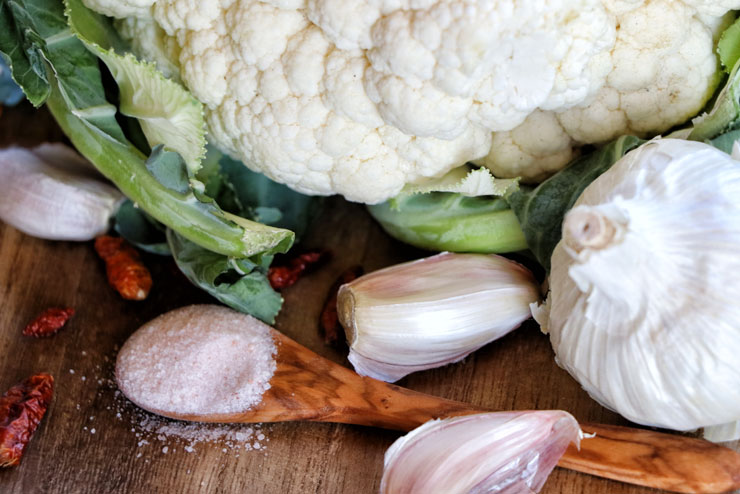
For this tasty fermentation recipe you need these ingredients:
- 1 cauliflower
- 4 cloves of garlic
- 2 small red chillies
- 1 tbsp Himalaya rock salt* (You can simply order your rock salt here* online)
- about 450 ml of water
useful accessories:
- 700 ml glass with lid* with fermentation lid* and glass weight* – our special fermenting glasses and the matching accessories you can order here* online.
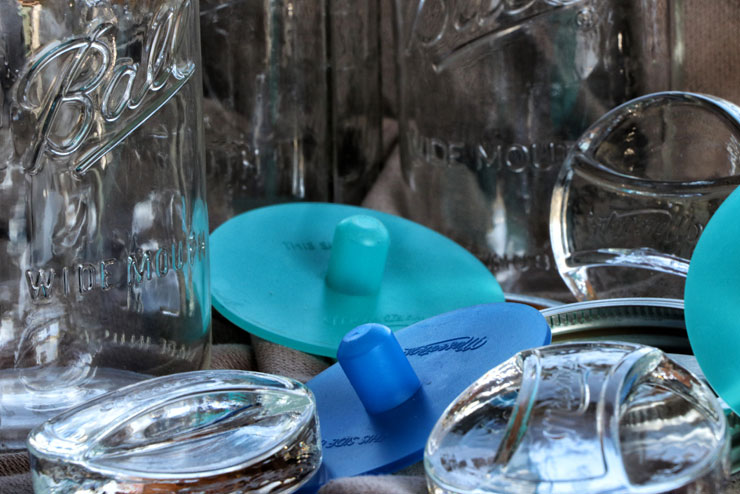
Are you interested in making your own fermented vegetables? Then you will find here* the necessary accessories.
Many more delicious fermentation recipes can be found here.
You have all the ingredients ready? Then we start immediately: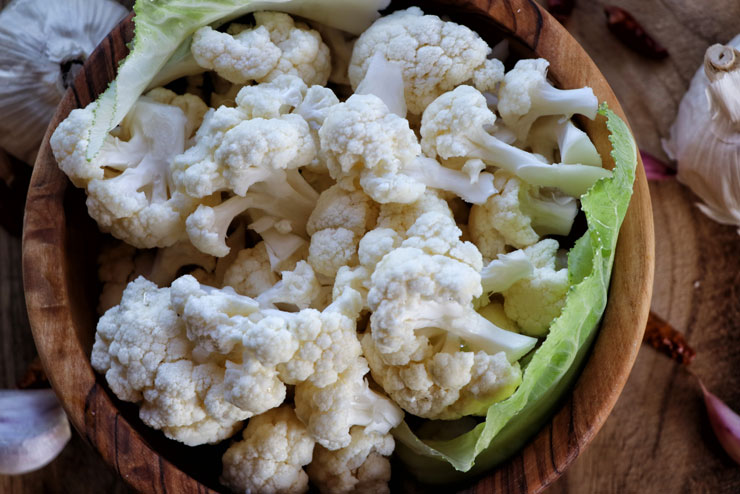
- Wash the cauliflower and cut into small florets.
- Peel the garlic.
- Put the cauliflower florets with the garlic and the chillies in the fermenting jar and fill as much as possible with the gaps between them.
- Add the salt with the water in a separate glass / bowl and mix well, so that the salt can dissolve.
- Now fill up the fermentation glass with the salt water, but leave room for the glass weight at the top so that it fits exactly.
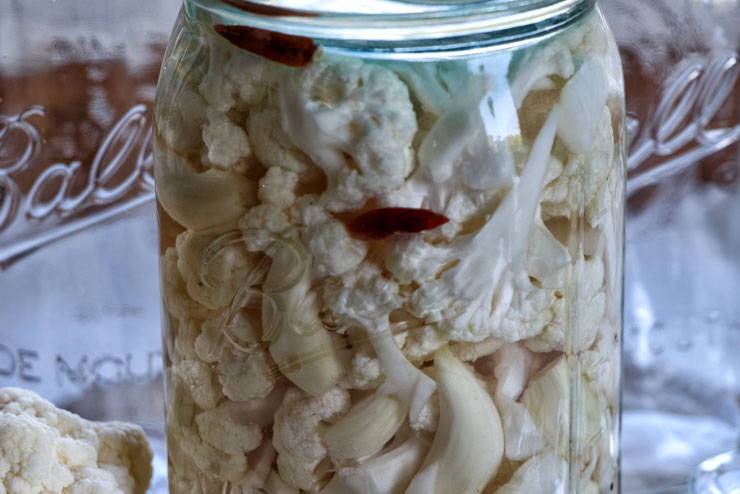
- Now screw the fermentation attachment onto the glass and leave it at room temperature for about 3-5 days.
Tip: The cauliflower is ready to eat after only 3 days. However, if you want a more intense taste, the vegetables can simply be left to ferment for up to 14 days. Once your fermentation process is complete, cap the jar with an airtight lid and store in the refrigerator. You can also prepare several portions directly and enjoy later.
Cauliflower fermented - a new way of preparing for the full development of all flavors
Print RecipeIngredients
- 1 cauliflower
- 4 cloves of garlic
- 2 small red chillies
- 1 tbsp Himalaya rock salt
- about 450 ml of water
- useful accessories:
- 700 ml glass with lid with fermentation lid and glass weight
Instructions
Wash the cauliflower and cut into small florets.
Peel the garlic.
Put the cauliflower florets with the garlic and the chillies in the fermenting jar and fill as much as possible with the gaps between them.
Add the salt with the water in a separate glass / bowl and mix well, so that the salt can dissolve.
Now fill up the fermentation glass with the salt water, but leave room for the glass weight at the top so that it fits exactly.
Now screw the fermentation attachment onto the glass and leave it at room temperature for about 3-5 days.
Have fun and enjoy!
I am looking forward to see you again for my next recipes.
Petra
Watch also this video and many more regarding Kefir and Kombucha on my Youtube channel…
* This is an Affiliate-Link – Affiliate-Links are sponsored Links

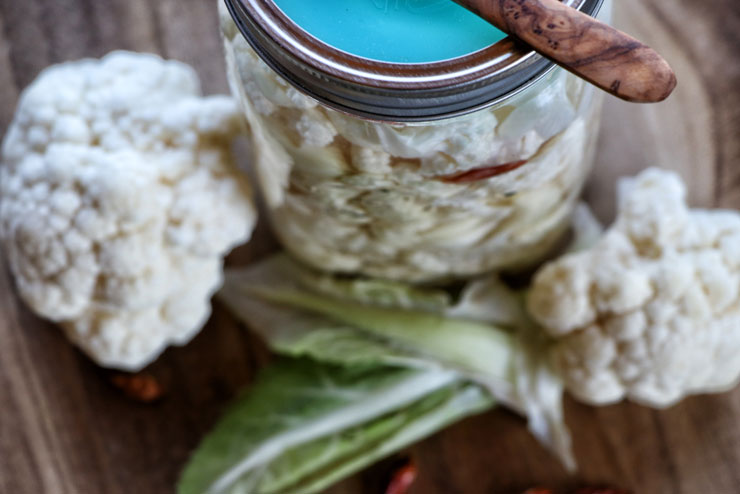
13 Comments
Marina Zinske
Thursday June 6th, 2019 at 03:13 PMKlasses Rezept! Ich habe es ausprobiert und bin sehr begeistert. Der Blumenkohl ist fermentiert und trotzdem schön knackig. Die kleinen Chilli geben ganz gut Schärfe ab. Das mag ich sehr. Vielen Dank für dieses pfiffige Rezept:-)
Liebe Grüße
Marina
Petra
Wednesday June 12th, 2019 at 10:19 AMLiebe Marina,
ein ganz großes Dankeschön:-)
Alles Liebe
Petra & Stephan
Verena
Monday November 22nd, 2021 at 06:47 PMHallöchen,
Vielen Dank für das Rezept. Probiere es jetzt aus. Nur eine Frage- erhitzt ihr den Blumenkohl zum Verzehr oder esst ihr ihn so?
Liebe Grüße
Petra
Tuesday March 1st, 2022 at 12:39 PMHallo Verena,
vielen Dank für Ihren lieben Kommentar.
Wir essen den Blumenkohl so, ohne erhitzen. So bleiben die Mikroorganismen am Leben:-)
Herzliche Grüße
Stephan & Petra Kriegener
Cinthia Wagner
Monday May 18th, 2020 at 11:03 PMLiebe Marina,
Ich habe ein Frage: darf ich TK Kaisergemüse fermentieren?
Danke
Petra
Wednesday June 3rd, 2020 at 12:41 PMLiebe Marina,
vielen Dank für Ihren Kommentar:-)
Wir sind noch nicht auf die Idee gekommen für die Fermentation Tiefkühlware zu nutzen. Grundsätzlich sollte es aber funktionieren:-)
Liebe Grüße
Petra & Stephan Kriegener
Luis B
Wednesday October 7th, 2020 at 01:20 PMFür die Fermentation sind ja Milchsäurebakterien auf dem Gemüse zuständig. Daher ist es immer ratsam zur Fermentation Bio-Gemüse zu verwenden und nicht solches aus industrieller Produktion, da dort ein Grossteil der guten Bakterien durch den Einsatz von Chemie abgetötet werden. TK Gemüse wird grösstenteils aus industrieller Produktion stammen, zudem tötet das Gefrieren einen Grossteil der wenigen noch vorhandenen Bakterien ab. Macht also m.E. kaum Sinn..
Ursula
Saturday July 4th, 2020 at 05:41 PMMuss das Wasser vorher abgekocht werden?
Petra
Monday July 6th, 2020 at 12:12 PMLiebe Ursula,
vielen Dank für Ihren Kommentar!
Wenn Sie gutes Wasser haben grundsätzlich nicht. Heutzutage muss man leider dazu sagen, dass mitunter viel Chlor ins Wasser gepumpt wird. Daher würde ich das Wasser einen Tag in einer Karaffe stehen lassen. Somit würde sich das Chlor (gas) verflüchtigen. Dann kann es mit der Fermentation auch schon losgehen:-)
Liebe Grüße
Petra & Stephan Kriegener
Luis B
Wednesday October 7th, 2020 at 01:14 PMIch habe erstmal versucht, Blumenkohl zu fermentieren. Nach einer Woche hat sich etwas Kahmhefe gebildet, was ja nicht weiter problematisch ist. Allerdings riecht der Blumenkohl äusserst merkwürdig. Nicht faulig aber halt auch überhaupt nicht appetitlich sondern irgendwie chemisch. Ich habe mich wohl mit der Salzmenge vertan und eine 1% statt 2% lake verwendet.. kann das der Grund sein? Zudem fällt der Blumenkohl auch komplett auseinander…
Petra
Friday October 9th, 2020 at 02:37 PMHallo Luis,
vielen Dank für Ihren Kommentar.
Die geringere Salzkonzentration kann natürlich dazu führen, dass sich unerwünschte Mikroorganismen vermehren können. Von daher kann das durchaus ein Grund sein.
Viel Erfolg beim Fermentieren!
Herzliche Grüße
Petra & Stephan Kriegener
Nina
Saturday January 16th, 2021 at 08:32 PMHallo,
Ist es normal das die Flüssigkeit am dritten Tag etwas trüber wird. Also nicht mehr klar ist?
Mit freundlichen Grüßen
Nina
Petra
Tuesday January 19th, 2021 at 04:30 PMLiebe Nina,
vielen Dank für Ihren Kommentar!
Ja, dass sich die Flüssigkeit etwas eintrübt ist völlig normal. Es ist alles gut:-)
Viel Spaß weiterhin beim Fermentieren!
Herzliche Grüße
Petra & Stephan Kriegener